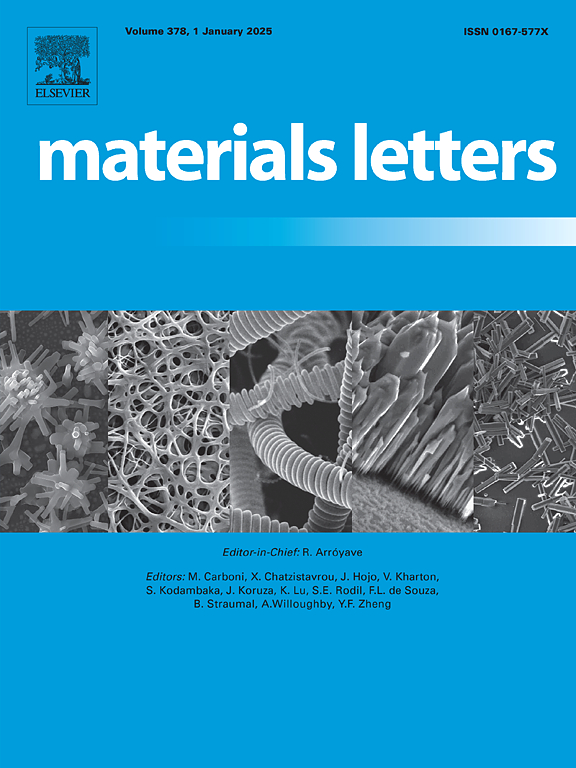Modulation of Sb2Se3 longitudinal growth by CdCl2 treatment for high-performance photodetectors
IF 2.7
4区 材料科学
Q3 MATERIALS SCIENCE, MULTIDISCIPLINARY
引用次数: 0
Abstract
Antimony selenide (Sb2Se3) has attracted much attention in photodetectors (PDs) for its abundant reserves, low toxicity, low price, and high absorption coefficient. While the PDs performance has been limited by the transverse growth pattern of Sb2Se3. In this study, CdCl2-treated SnO2 electron transport layer (ETL) substrate has been used to grow Sb2Se3, which induces the preferential growth of Sb2Se3 along the (002) direction, and the grains are transformed from transverse to longitudinal. This enhanced carrier mobility, resulted in improved photocurrent (0.489 mA), responsivity (70 mA W−1), and specific detectivity (9.29 × 1013 Jones) than the pristine device, which is enhanced by 18, 17, and 8 times, respectively. The results indicate that the CdCl2 treatment effectively optimizes the SnO2 ETL interfacial properties and regulates the longitudinal growth of Sb2Se3 grains, which guides the further development of Sb2Se3 PDs.
CdCl2处理对高性能光电探测器Sb2Se3纵向生长的调制
硒化锑(Sb2Se3)以其储量丰富、毒性低、价格低廉、吸收系数高等特点在光电探测器领域受到广泛关注。而PDs的性能受到Sb2Se3横向生长模式的限制。本研究采用cdcl2处理的SnO2电子传输层(ETL)衬底生长Sb2Se3,诱导Sb2Se3沿(002)方向优先生长,晶粒由横向向纵向转变。这种增强的载流子迁移率导致光电流(0.489 mA),响应率(70 mA W−1)和比探测率(9.29 × 1013 Jones)比原始器件分别提高了18倍,17倍和8倍。结果表明,CdCl2处理有效地优化了SnO2 ETL界面性能,调控了Sb2Se3晶粒的纵向生长,为Sb2Se3 pd的进一步发展提供了指导。
本文章由计算机程序翻译,如有差异,请以英文原文为准。
求助全文
约1分钟内获得全文
求助全文
来源期刊

Materials Letters
工程技术-材料科学:综合
CiteScore
5.60
自引率
3.30%
发文量
1948
审稿时长
50 days
期刊介绍:
Materials Letters has an open access mirror journal Materials Letters: X, sharing the same aims and scope, editorial team, submission system and rigorous peer review.
Materials Letters is dedicated to publishing novel, cutting edge reports of broad interest to the materials community. The journal provides a forum for materials scientists and engineers, physicists, and chemists to rapidly communicate on the most important topics in the field of materials.
Contributions include, but are not limited to, a variety of topics such as:
• Materials - Metals and alloys, amorphous solids, ceramics, composites, polymers, semiconductors
• Applications - Structural, opto-electronic, magnetic, medical, MEMS, sensors, smart
• Characterization - Analytical, microscopy, scanning probes, nanoscopic, optical, electrical, magnetic, acoustic, spectroscopic, diffraction
• Novel Materials - Micro and nanostructures (nanowires, nanotubes, nanoparticles), nanocomposites, thin films, superlattices, quantum dots.
• Processing - Crystal growth, thin film processing, sol-gel processing, mechanical processing, assembly, nanocrystalline processing.
• Properties - Mechanical, magnetic, optical, electrical, ferroelectric, thermal, interfacial, transport, thermodynamic
• Synthesis - Quenching, solid state, solidification, solution synthesis, vapor deposition, high pressure, explosive
 求助内容:
求助内容: 应助结果提醒方式:
应助结果提醒方式:


